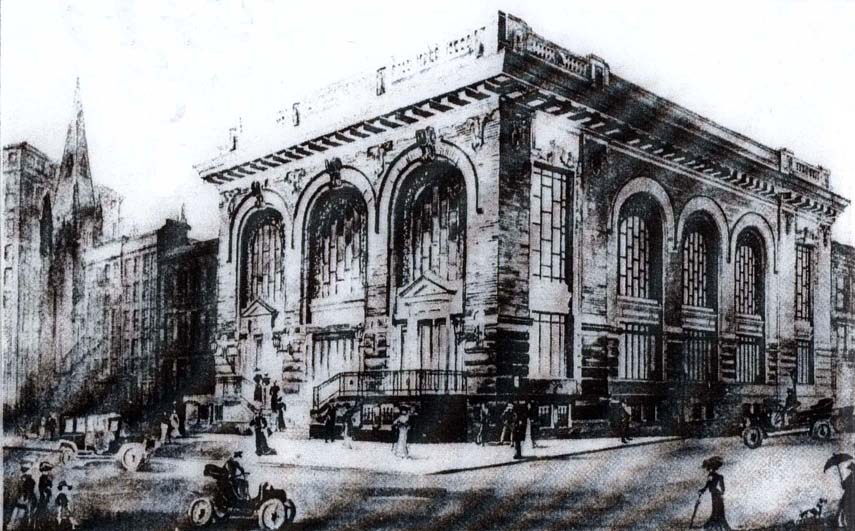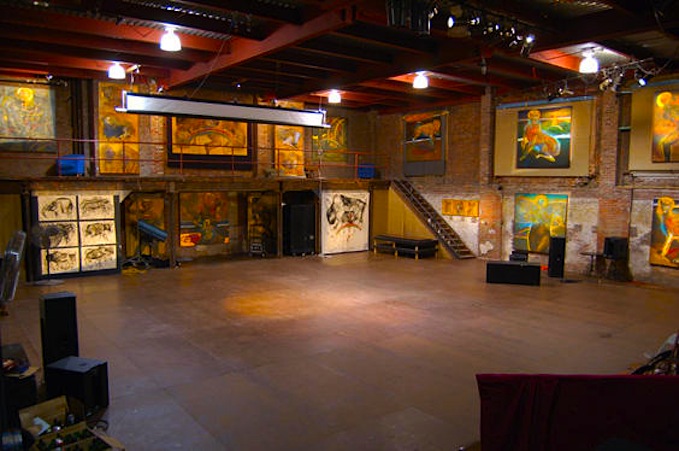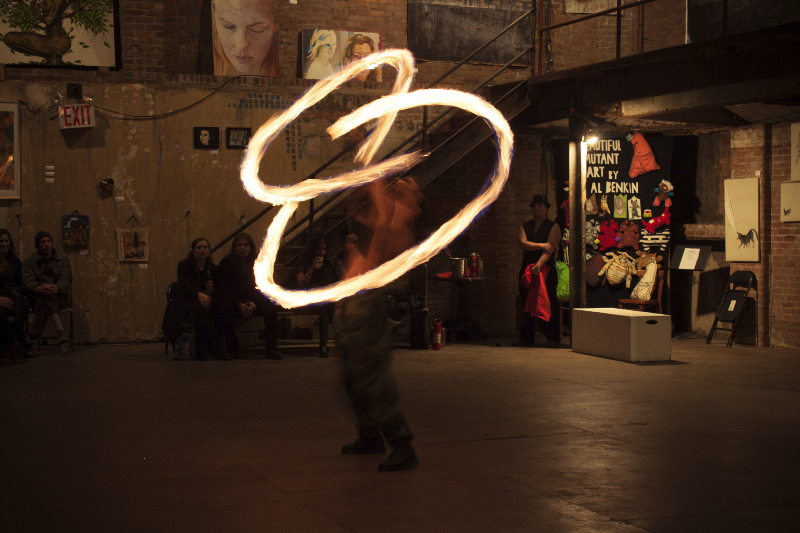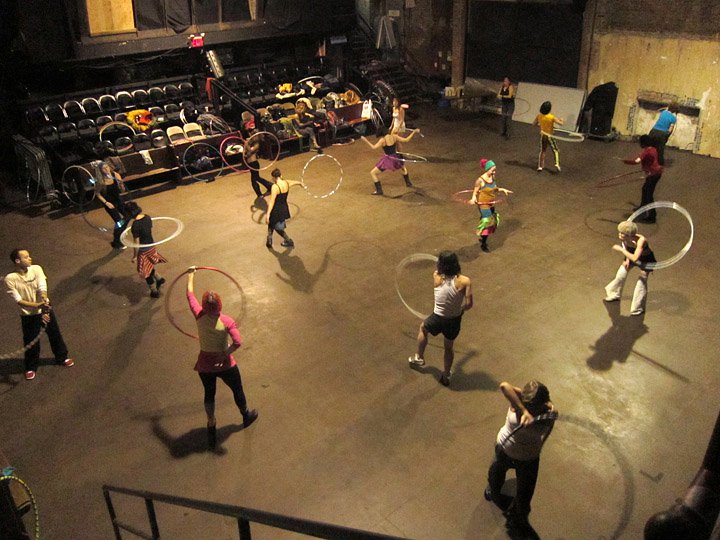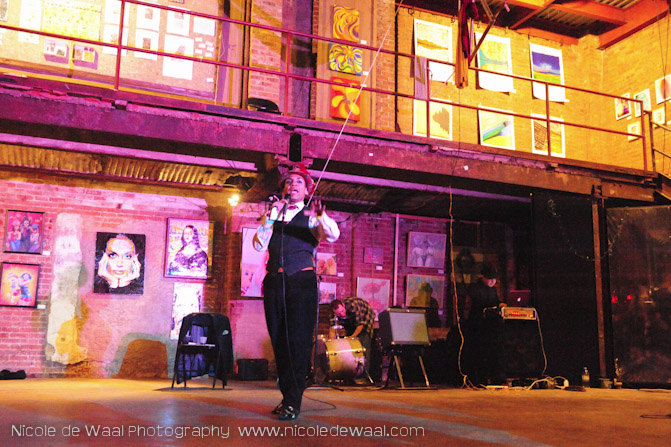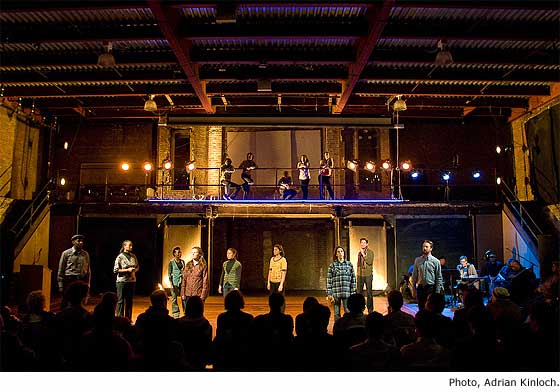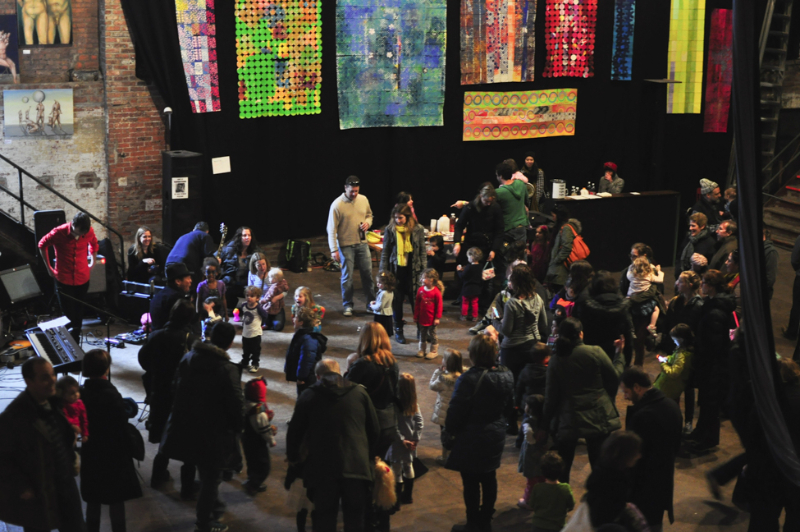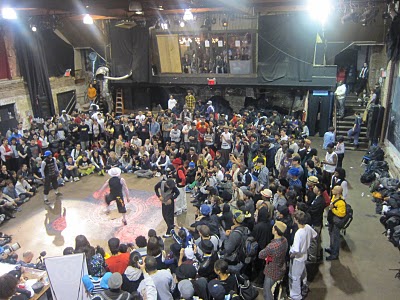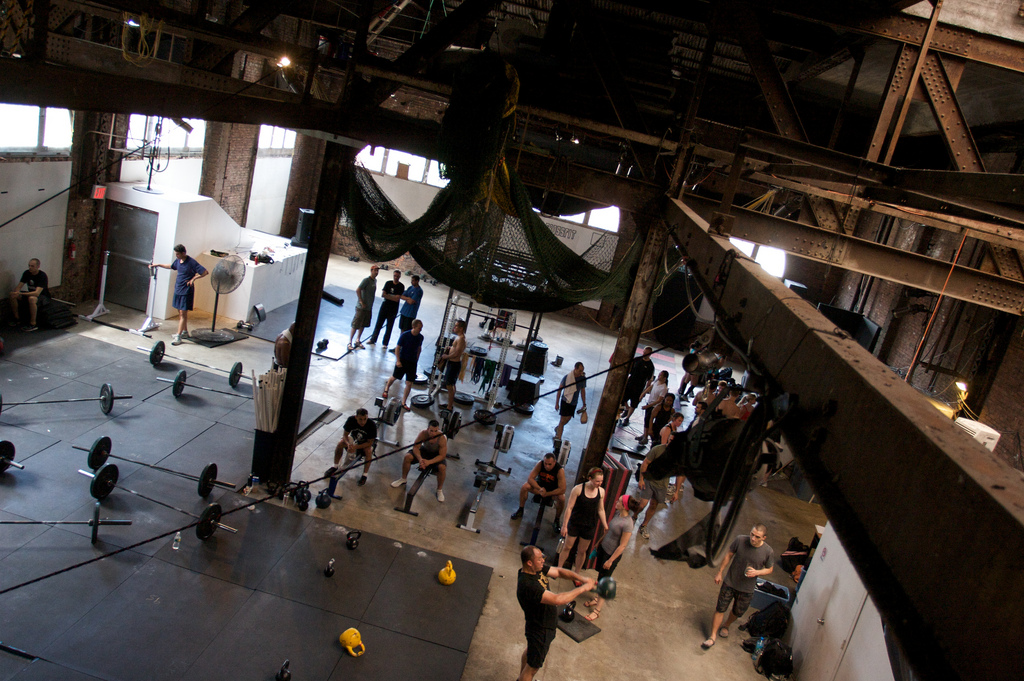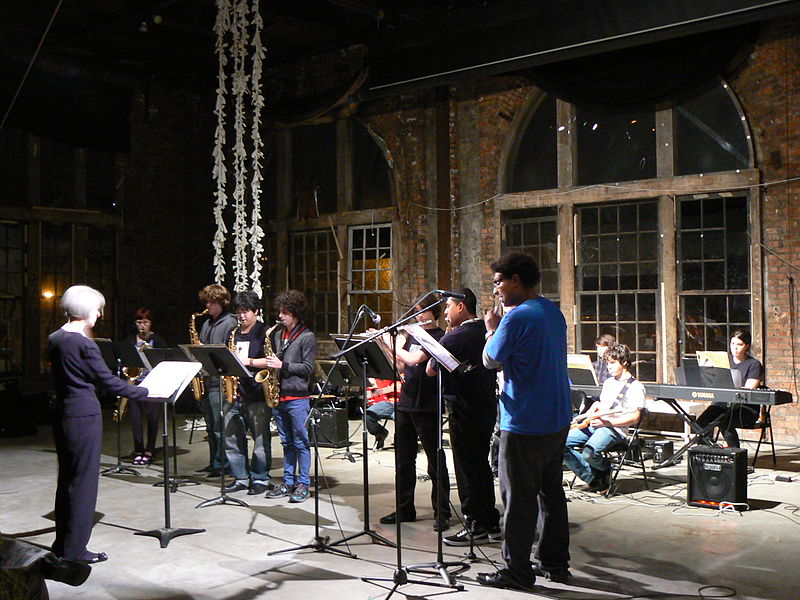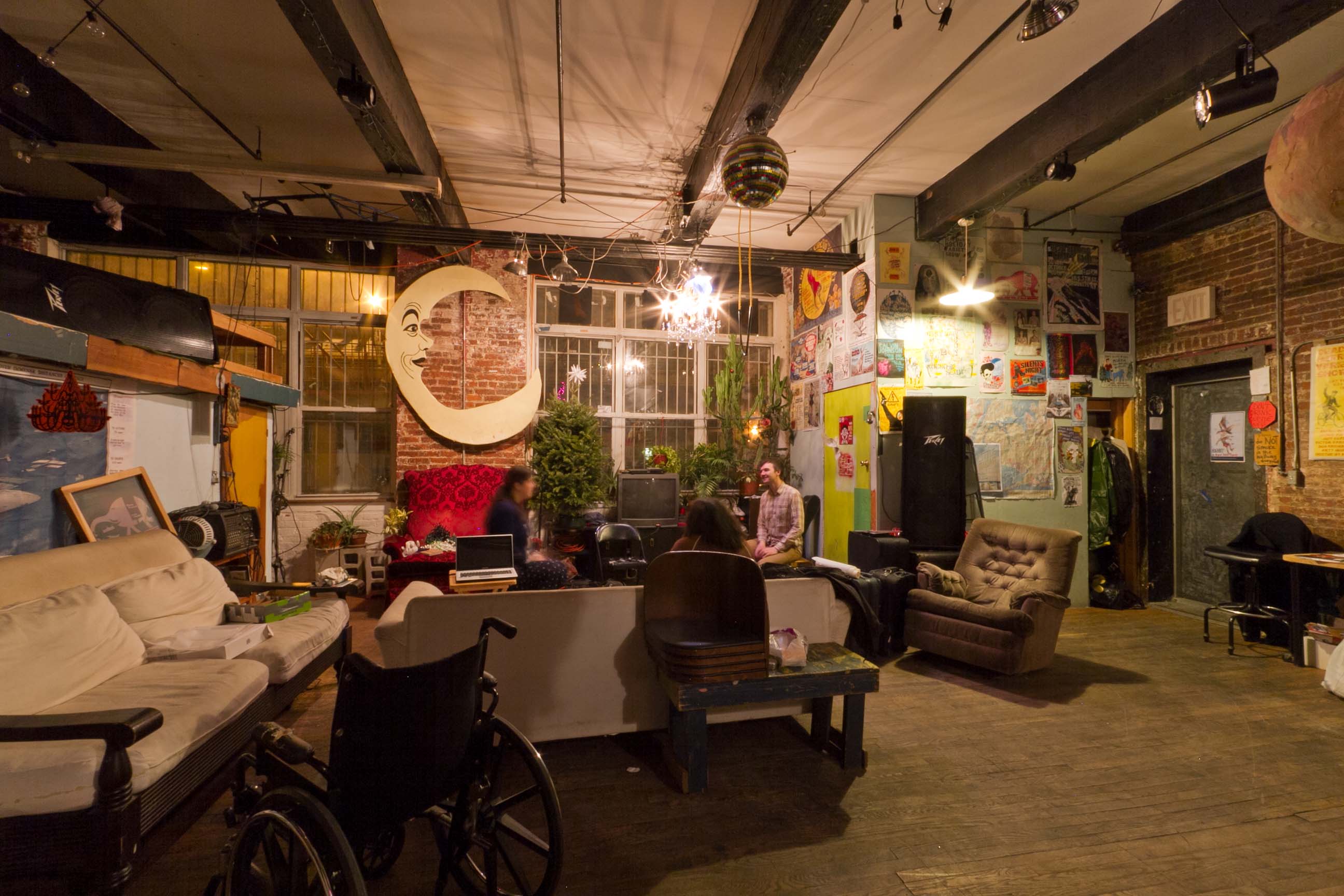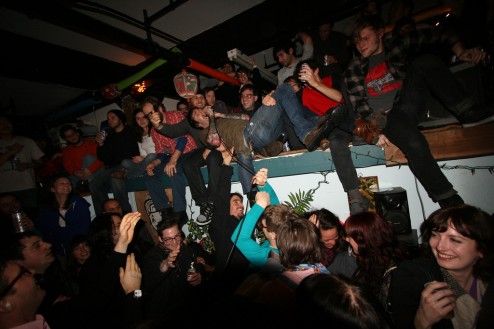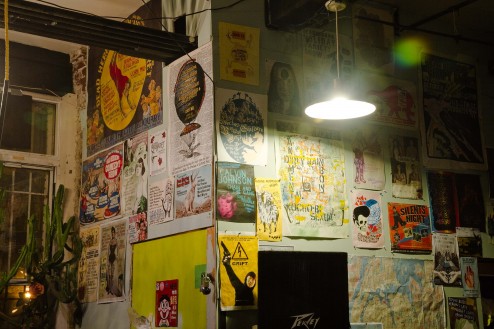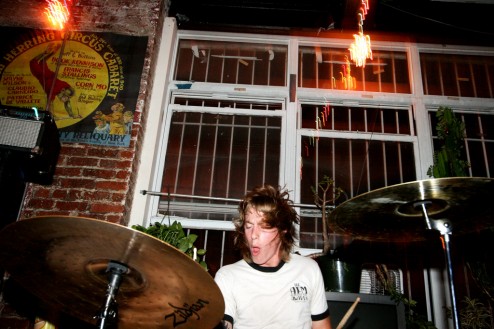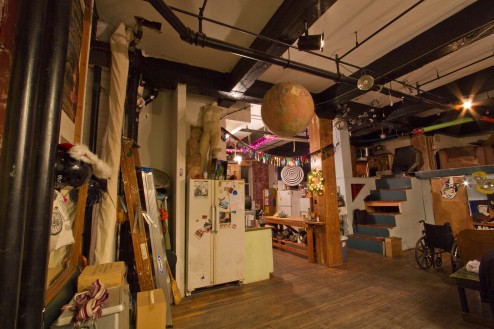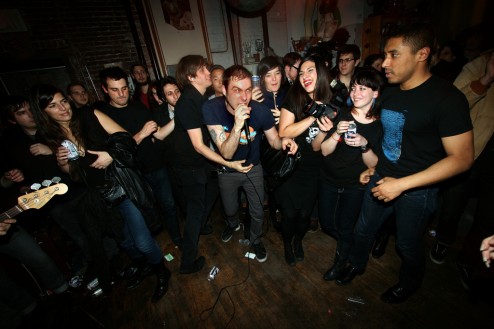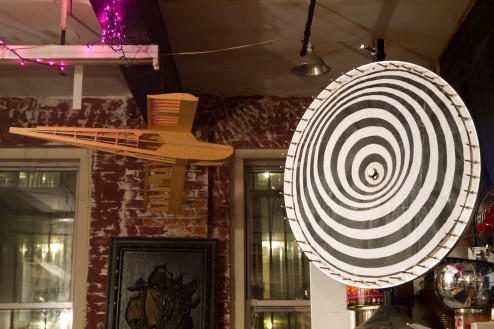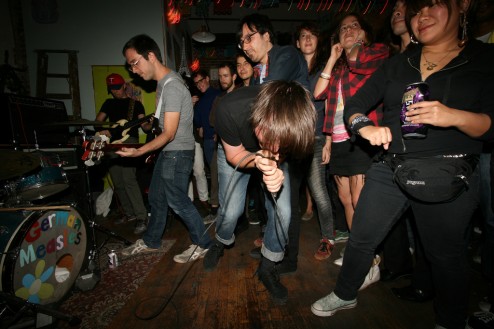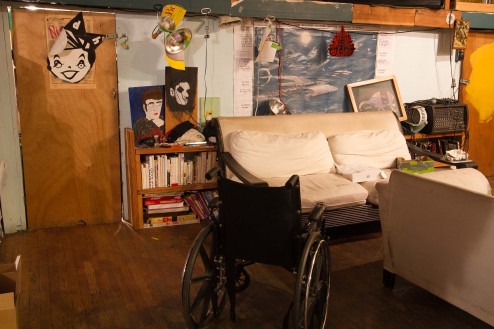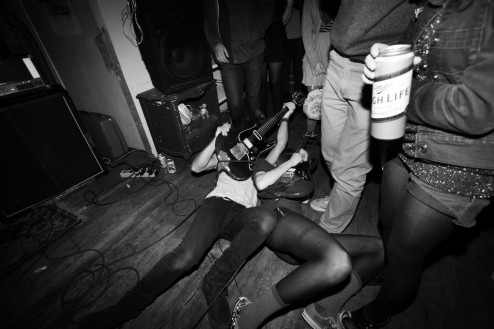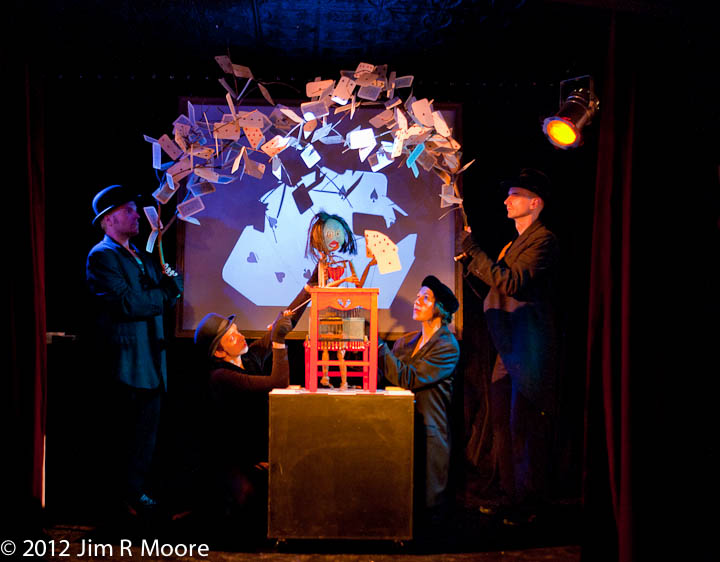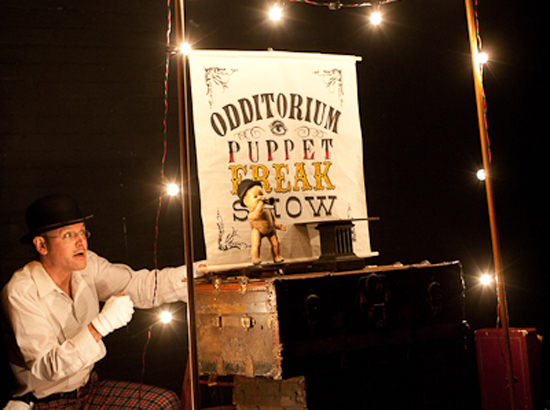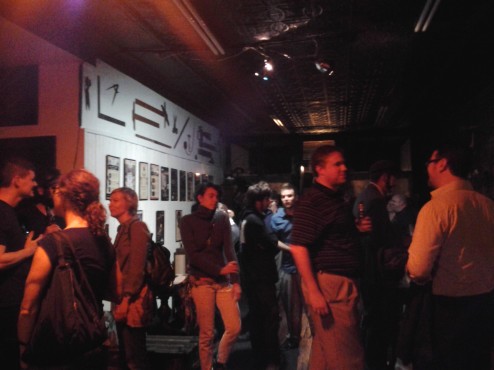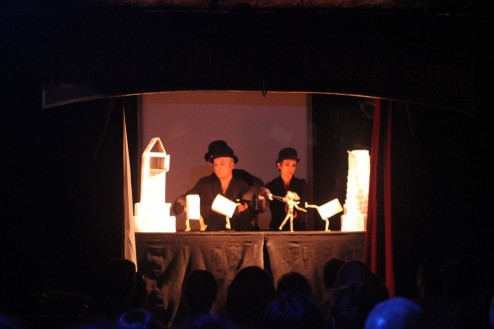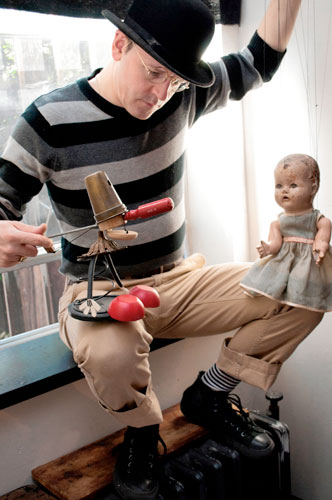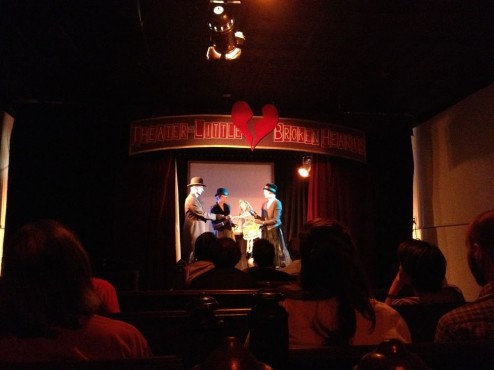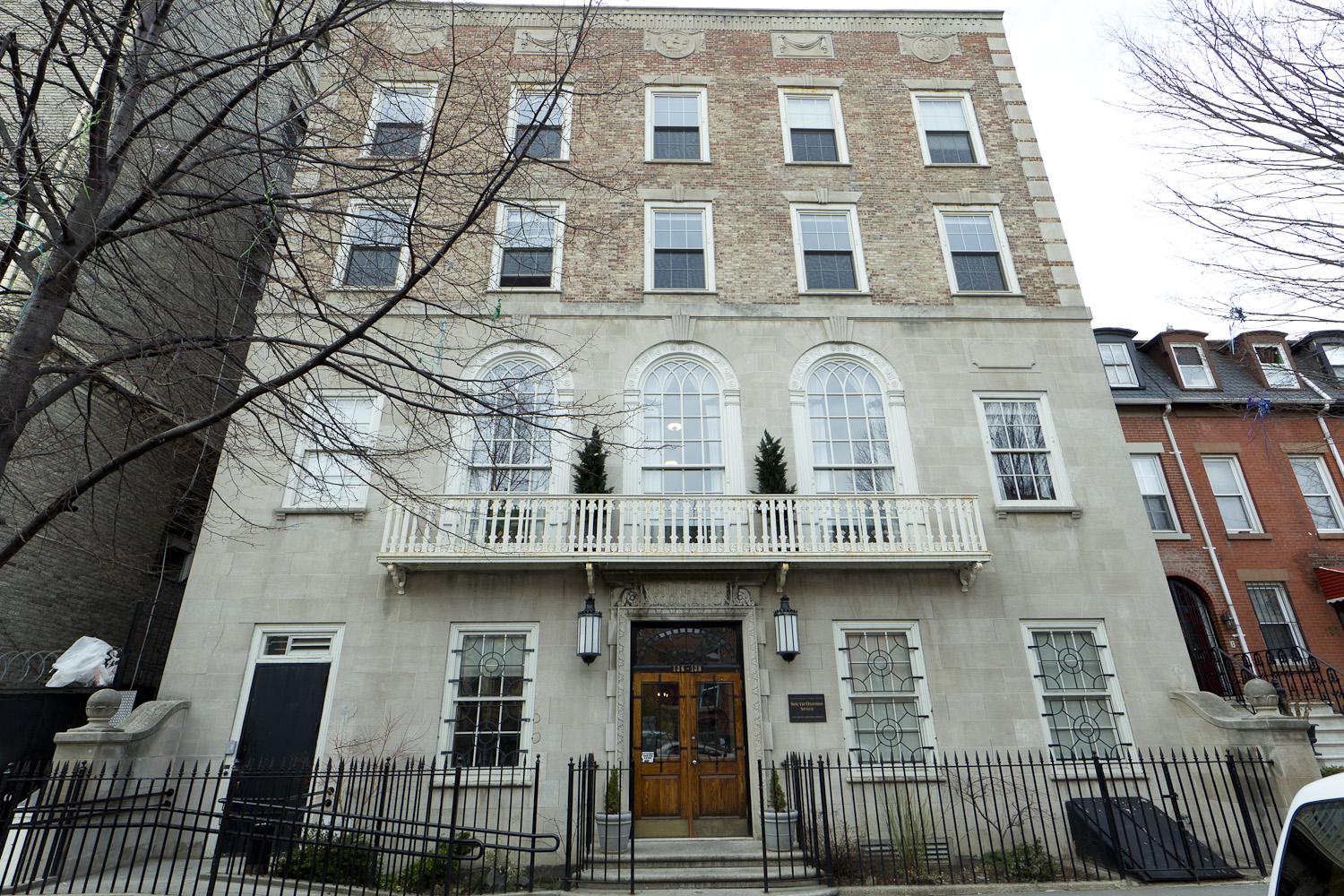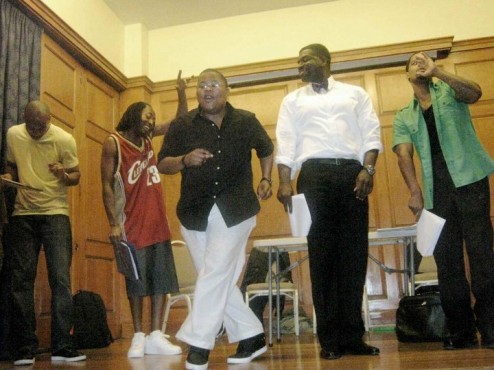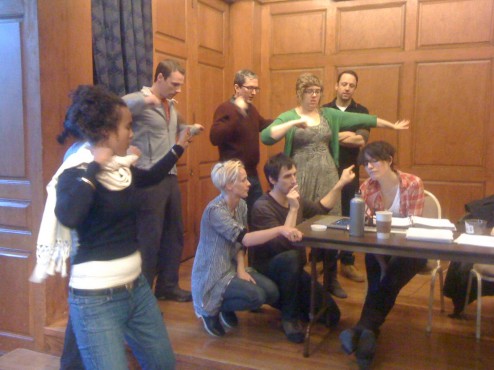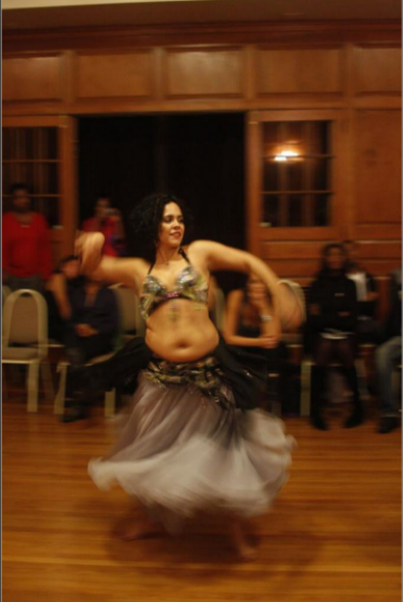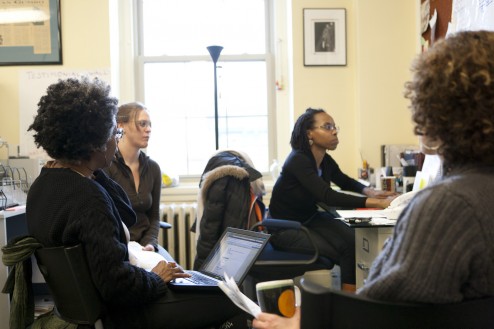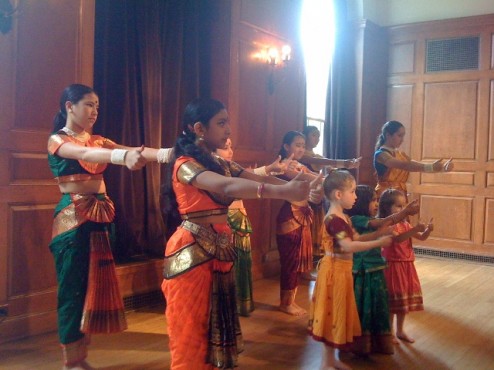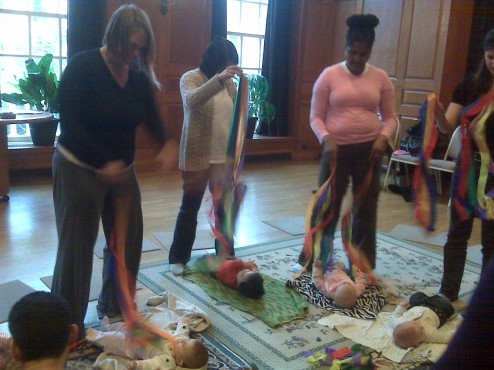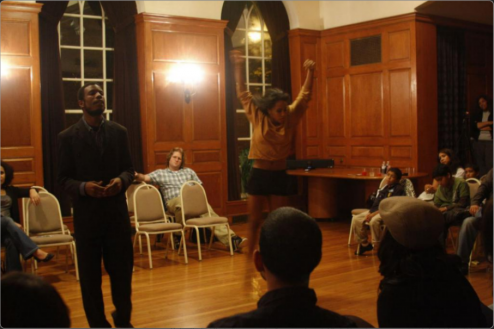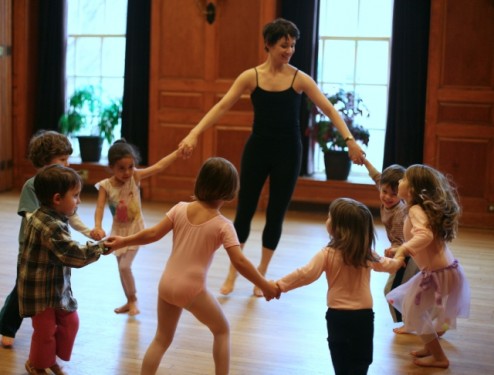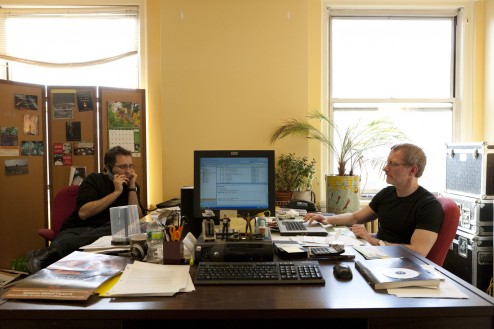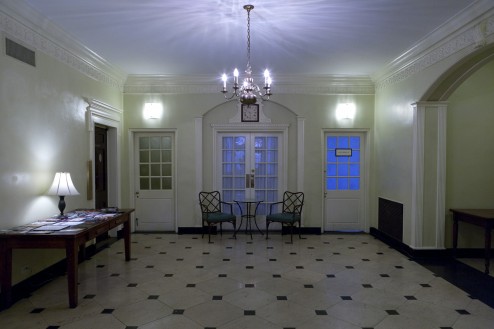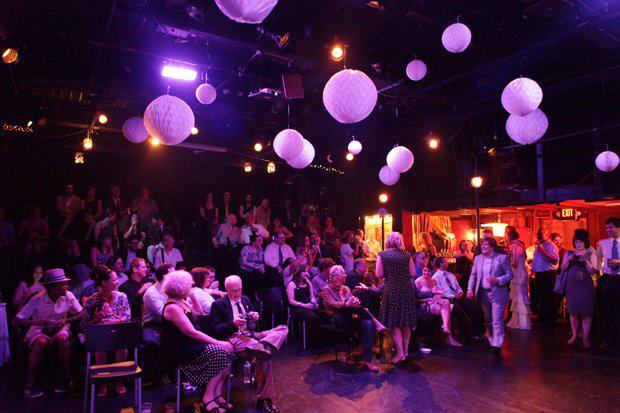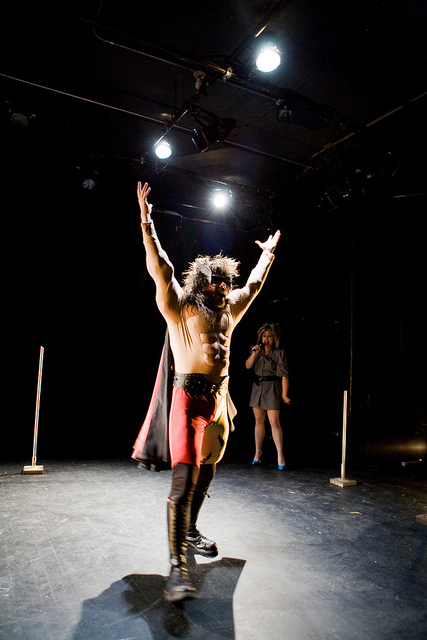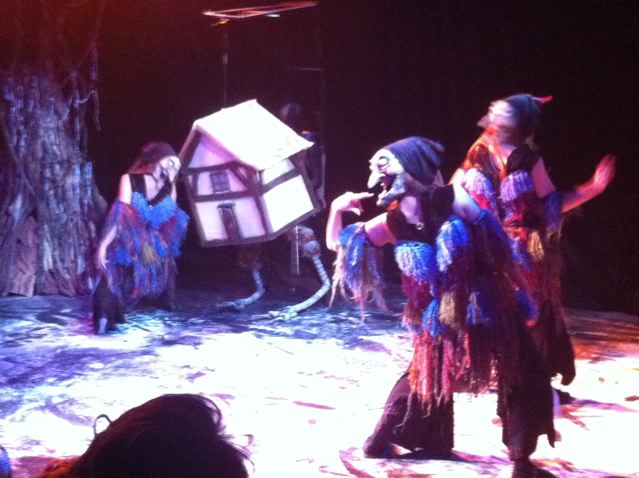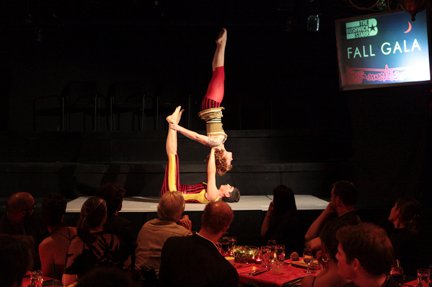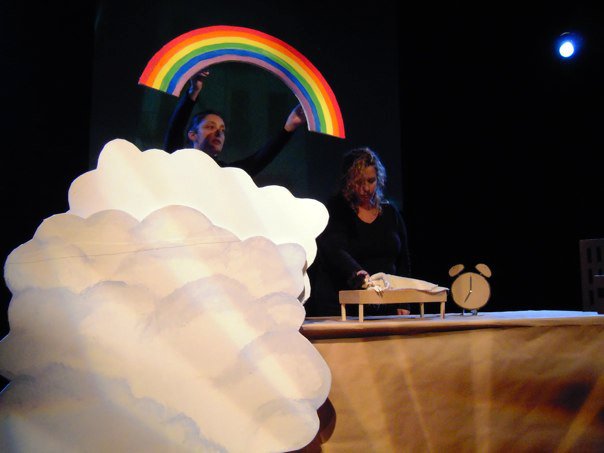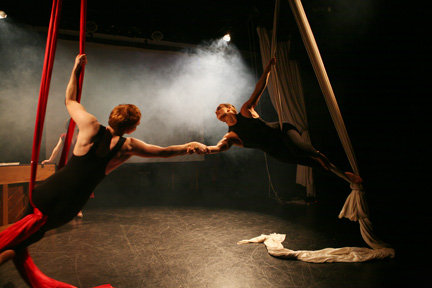brooklyn lyceum
space type: performance venue | neighborhood: park slope | active since: 1910 | links: website, facebook, twitter
This is by far the oldest space I’ve written about. It was built in 1910 as a public bathhouse, boasting 100 showers and the largest indoor pool in the country. You can still see evidence of its past on the façade: etched onto the top are the words “PVBLIC BATH,” and there are two entrances, one each for men and women. In the late 1930s, as part of a WPA project headed by Robert Moses, it was closed down, and then reopened in the early 1940s as a gym, which it remained for about two decades. After that it changed hands several times, going from a mattress warehouse to a transmission repair shop, among others. Then in 1994, Eric Richmond bought it to turn it into an arts center.
In its current incarnation, the cavernous Lyceum plays host to an astonishing array of artistic events, from plays and performances to fitness classes and sprawling galas. Some highlights from the past two decades: performances from Fiona Apple, Polyphonic Spree, Yo La Tengo, Upright Citizens Brigade, Amanda Palmer, and Black Dice, plus festivals like KingCon Brooklyn, Oxheart’s Canvas, NY Zine Fest, and the Brooklyn International Film Festival.
The Lyceum also has a daytime marketplace for coffee and local products, and soon there will be coworking space available during the days as well. And the building is available for rental, so if you’re looking for a really unusual place for that’s steeped in Brooklyn history for your shindig, you’ve probably found it. In the meantime, check out my Q&A with Eric Richmond.
brooklyn spaces: What’s it like being the
caretaker of such an immense old space?
Eric: We got involved with the property in
1994, and we’re just constantly working on fixing it up. We’ll fix something,
have some events and shows to generate more revenue, then fix something else,
then have more events and shows, like that. Most of the basics are done by now,
but there’s always more work to be done.
brooklyn spaces: What was the area like when
you got here?
Eric: This wasn’t a good area, not even
close. There were gang members on the stoop, people getting shot in the subway.
When we first started working on the building, we went out into the neighborhood
and talked to as many of the older residents as we could, to try to get them
excited about what we were doing. By and large, the response was, “It’s a
beautiful building, but I want nothing to do with it.” There had been such bad
things happening on this block for four or five decades that everyone would
avoid it. I heard from one woman that some kids had died in the building; they
cut a hole in the fence of the balcony and dove in the pool, which was only
about two feet deep at that end.
brooklyn spaces: So what did you have to do
to get the older people to start coming here?
Eric: Oh, I never got them. I made the
effort, but it never worked. But then things started changing in the
neighborhood anyway. In 1998, a bunch of kids across the street tried to build a
bomb and blow up Atlantic Terminal. It hit the news big-time, the Feds swooped
in, and the city started making a serious effort to clean up the neighborhood.
There were drug busts two or three times a week for about six months. A retired
policemen once told me that the area around Union St and 5th Ave had one of the
highest concentrations of crack dealers in the city. So they had to root out
that kind of stuff.
brooklyn spaces: Wow. 1998 wasn’t that long
ago.
Eric: Right. So all I did was hang on long
enough, you know? I mean, I cleaned up the best I could in the meantime, but for
a long time, 4th Ave was just a dumping ground for everything. There were times
when car doors would get thrown over our fence, bumpers, giant piles of concrete
rubble, even a wardrobe. One time, about two dozen huge red plastic letters
showed up inside our fence. So I played Scrabble with them, and what did it
spell? Associated Supermarket. I walked up the block, went into the store, and
said, “You guys just dumped your old shit in my yard. Come deal with it.” They
said, “We didn’t dump it!” I had to lay out the letters and show them.
brooklyn spaces: So are you seeing positive
effects of the huge influx of new people in the neighborhood? Are you getting
more foot traffic?
Eric: It’s hard to tell because the café is
on hiatus. Now there are six places around here where you can get a great cup of
espresso, so we have to figure something else out. We’re going to be opening a
fairly large coworking space in a couple of months, so it’ll be interesting to
see how that goes.
brooklyn spaces: Do you have some favorite
events or performances that have happened here?
Eric: We had a rock musical early on that
was really tremendous, it was based on David Bowie. About a decade ago we had a
Broadway dancer choreograph the musical On the Town with songs about
New York. That was one of the best shows I’ve ever seen. A year or so ago we had
a Rocky: The Musical workshop here; they took over the whole space,
built a ring, did all their rehearsals and some performances, and then went off
to Germany to perform there. There have been some amazing music acts, too: Fiona
Apple, Yo La Tengo, stuff like that.
brooklyn spaces: Are there some lessons
you’ve learned from doing this for so long?
Eric: Lately we’ve been thinking a lot
about what we’re trying to accomplish, and working toward being more
intentional. It’s important to make the events conform to the building, instead
of trying to force the building to conform to the events.
brooklyn spaces: So are there particular
things you’d like to have more of?
Eric: We’ll probably be reloading the music
and performance end of what we do. I mean, I love music, I love bands, but loud
band just don’t work here. When a DJ comes in, you can tell him all you want
about sound level limits, but he won’t pay any attention. People always say “Why
can’t it be louder?” Well, because you’re not in a club in Chelsea. I don’t have
eighteen-inch brick walls, we’re not in an abandoned warehouse, you’re not going
to piss off my neighbors. That limits some of the higher-profile events, but
that’s fine. We’re not trying to get Jay-Z to come play here; I’d rather have
more Bar Mitzvahs.
brooklyn spaces: Are there other things you
want to talk about about your experiences here? You’ve been doing this a long
time; you’re part of old-guard Brooklyn.
Eric: That’s a sad thought, but probably
true. The only thing I can say is that Brooklyn’s changing. It’s changing like
wildfire, and it’s good to see.
brooklyn spaces: It’s nice to hear that.
When I talk to people in Williamsburg or even Bushwick, the feeling is, “It kind
of sucks; we’re about to get priced out.”
Eric: Well the problem is, they didn’t buy.
People who are in a space temporarily don’t tend to think about being part of
the infrastructure. They have an itinerant arts ethos and style that has to up
and move all the time. You’re going to see them in Brownsville next, and then
East New York, and then Ocean Hill.
brooklyn spaces: Yeah, and then Detroit.
Because we’re running out of places to go.
Eric: Well, it’ll take a long time. I go to
Williamsburg and see all the people there, all the development, it’s
unbelievable. I remember getting held up a couple times in Williamsburg; now
it’s got athletic facilities and tens of thousands of people milling about every
weekend. I think it’s a good thing. When I go to Bed-Stuy and see Dough, the best doughnut place in the city, right next
to the projects, how is that wrong?
***
Like this? Read about more historic buildings: Brooklyn Historical Society, Bushwick Schoolhouse, Breuckelen Distilling Co., Broken Angel, South Oxford Space, Trinity Project

